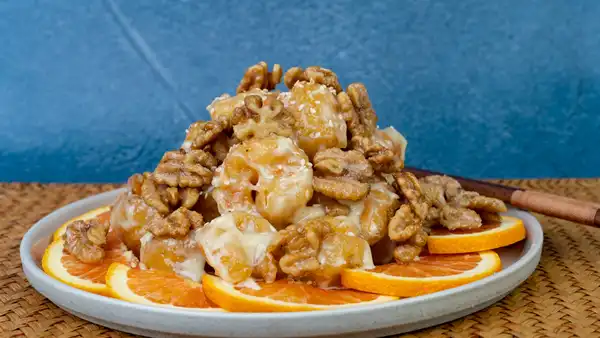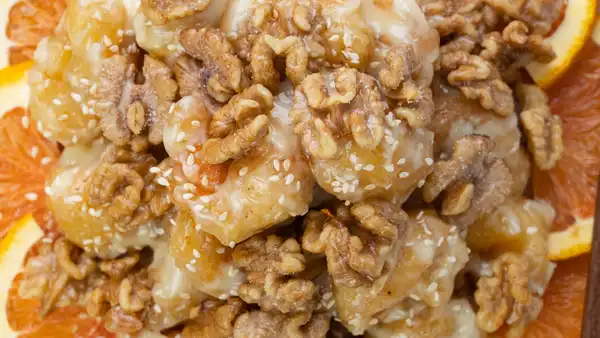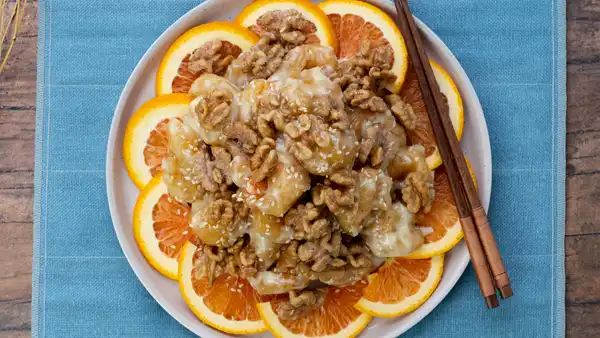If you’ve never tried honey walnut shrimp before, it’s like the perfect balance of sweet, savory, crunchy, creaminess.
The Origins of Honey Walnut Shrimp
For our video, we got a lot of questions about the origins of honey walnut shrimp. It’s interesting because it doesn’t taste like old school Chinese cuisine, and also, just like General Tso’s Chicken, it’s extremely popular in the West yet fairly unheard of in the East.
I couldn’t find anything definitive on the exact origins, but most likely, the dish was first invented in Hong Kong, and made its way to the US in the 80s and 90s.
Interestingly, none of my younger friends in Hong Kong have even heard of this dish. BUT, digging deeper, when we asked the older generations of Hong Kong, they had tons of memories and experiences eating it.
By one anecdote from my friend’s mom, growing up in Hong Kong in the 60s and 70s, she went to banquets all the time. Both walnuts and prawns were considered expensive and celebratory, but the walnut prawn dish was a more affordable seafood banquet item compared to dishes like abalone or steamed grouper.
Fast forward to today, at least in the US, it’s extremely popular as both a Chinese banquet and takeout dish. It’s one of those rare recipes that’s guaranteed to wow your friends but is also extremely easy to make.
Chinese Symbolism of Walnuts & Shrimp
As with many other Chinese dishes and ingredients, shrimp and walnuts both carry positive omens when served at big events and holidays.
The Cantonese word for "shrimp (虾 hā)" resembles the words for "laughing out loud (哈哈笑 hā hā siu)", so it's a symbol of having a lively time filled with laughter.
Similarly, the Cantonese word for "walnut (合桃 hahp tòuh)" is composed in part by the word "together (合 hahp)", so it's related to the phrase, "百年好合 baak nìhn hóu hahp". This is a common wish for newlyweds to have 100 great years of marriage.
Check out a quick story summary of our recipe!



